This dish not only looks fantastic, but tastes amazing – the sage and pumpkin flavours work so well together. They contain potassium and vitamin A, and the seeds are really nutritious. This is also a great recipe to use up all the scooped out flesh once you’ve made your Lanterns.
As regards medicinal properties – apparently pumpkins were once used for removing freckles and curing snake bites! How scary is that for Halloween?!
Ingredients:
4 baby pumpkins or one large one
1 tablespoon olive oil
Salt & ground black pepper
1 teaspoon fresh nutmeg, grated
4 portions risotto base
1 small bunch fresh sage
What you do with all this:
1. Preheat the oven to 350° F, 175° C, gas mark 4
2. Slice the top off each pumpkin and scoop out the seeds.
3. Carefully scoop out the flesh and cut into 1cm cubes.
4. Place the pumpkin flesh into an oven-proof dish, drizzle with olive oil, and season with salt, pepper and nutmeg. Roast for approximately 20 minutes or until soft.
5. Turn the scooped out pumpkins upside down onto a baking tray, with their lids, and roast them in the oven as well.
6. Meanwhile, make the risotto base, using the recipe in this book.
7. A few minutes before the risotto is finished, remove the roasted pumpkin flesh from the oven and add to the risotto, together with any roasting juices.
8. Finely chop the sage and add half of it to the risotto
9. Season to taste.
10. Remove the pumpkin shells carefully from the oven (they will be hot), place one on each plate, and fill with the risotto, overfill onto the plate for added effect.
11. Place a “lid” on each pumpkin and “garnish” the plate with remainder of the chopped sage.
Serves 4
There are many more great recipes like this in The Harcombe Diet Recipe Book
 |
 |


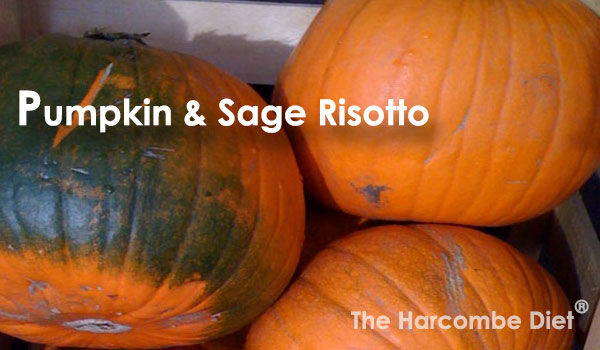
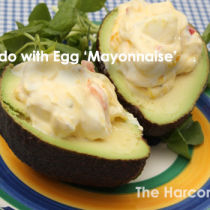
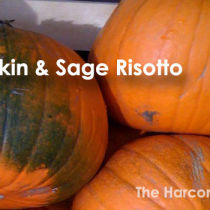
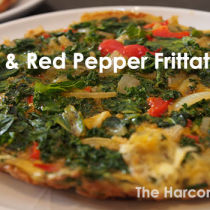
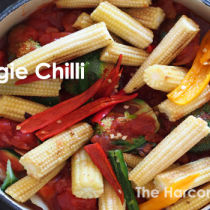

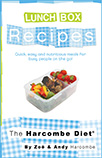
can I use butter nut squash instead of pumpkin in the rissotto
What is the coupon mentioned on the DVD purchase,and, is the e-book also in pdf format for computer?
Hi n – please can you say more about what coupon and which DVD? We’re racking our brains here! The ebook is in PDF format – all options here.
Best wishes – Andy
Hi Zoë
Am very interested in joining your diet regime, I have seen the recipe for pumpkin and sage risotto which sounds yummy, but can you tell me will this diet suit a (mainly) vegetarian who eats some fish, or are there plenty of recipe ideas which I can substitute meat with other things?
Many thanks – Nikkie
Great news about Arborio rice! But what about Japanese (white) rice? I love sushi, and other Japanese food….
I haven’t made any research to it but I find Japanese rice a lot tastier and more filling than usual white rice. Moreover, our two week holiday in Japan is actually the only holiday I have ever had during which I actually *lost* weight, not gained it, and I ate lot of Japanese style rice. For example, a Japanese breakfast consists of steamed rice, accompanied with e.g. fish, salt pickles (no vinegar!), seaweed and miso soup / green tea…
Isn’t arborio rice white rice? And what about the wine? Which phase would risotto be for? – I love risotto!! I have just finished phase 1 (lost 7lb – thank-you!) and am browsing the recipe section.
Hi Vanessa – on p376 of the recipe book there is a chicken risotto that can be part of Phase 1. There are other risotto recipes in the book for different phases.
The arborio rice is the interesting blend when a diet guru and chef work together! A chef would always use arborio, carnaroli or vialone nano rice for risotto (my hubby included). Taking arborio as the example – this has a unique, viscous texture and, when cooked, the grains are firm, creamy and chewy. This is due to the higher starch content of this variety. As the diet guru, I would use brown rice, as it works well enough for me and I know it’s the ‘most whole’ grain.
However, I was happy to have arborio used as the ‘correct’ way of cooking as this is sufficiently different to white rice to make it OK. Back to that unique starch content – 100g of this type of (risotto) rice has 21g of carbohydrate vs 29g in 100g of plain short grain white rice. One of the main reasons for eating food as close to nature delivers it is that the more natural a food is, the more difficult it is to over consume. You physically could not eat as many calories in the form of chicken and stir fry vegetables as you could in popcorn or M&M’s! I have tested arborio rice and it is as filling, and therefore as difficult to over consume, as brown rice. You can taste the natural chewiness and you won’t be able to eat as much as you could if you had a stack of white rice with a curry or chinese. The lower glycaemic stimulus also has lower impact on blood sugar. Try brown rice, if you’re at all worried.
As for the wine – you’ve got a medium glass of wine in this recipe. For a dry white, that’s 3-4g of carb. That’s between 4 people and there’s barely any alcohol content left after this has been cooked for half an hour. You won’t get more than a fraction of 1g of carb and your yummy meal will have the rich taste of wine!
Hope this helps – Best wishes – Zoe
Sadly I dont have your recipe book yet so please can you tell me how to cook the risotto with reference to step 6 in the above method many thanks
I hope your book comes soon, in the meantime, here’s the Risotto base recipe:
2 shallots or small
onions, finely chopped
2 cloves garlic, finely
chopped
2 tablespoons olive oil
400g good quality
Arborio rice, dry weight
160ml white wine
1.5 litres vegetable
stock, simmering
Salt & ground black
pepper
18-20 minutes of your
undivided attention
Method:
1) Gently fry the onion and garlic in the olive oil until
soft, but not coloured (approximately 5 minutes).
2) Add the rice and stir constantly for approximately
2 minutes.
3) Add the white wine and keep stirring until it has
been absorbed by the rice.
4) Add a ladleful of the stock and bring to a gentle
boil.
5) Cook, slowly, stirring frequently until the liquid
has been absorbed.
6) Repeat this gradual addition of stock until the rice
is creamy and tender, but with a little bite (al
dente).
7) Season to taste.